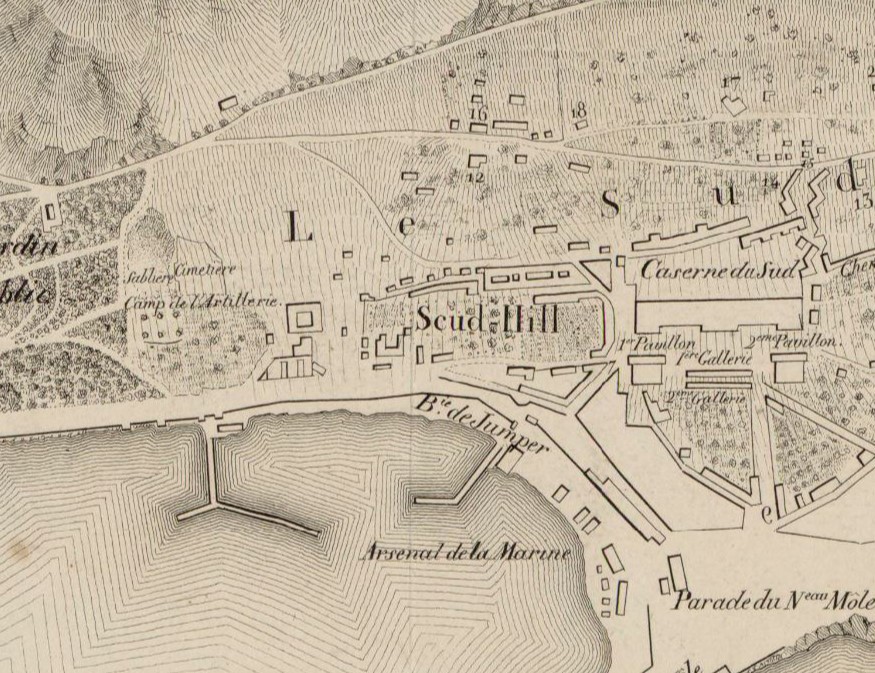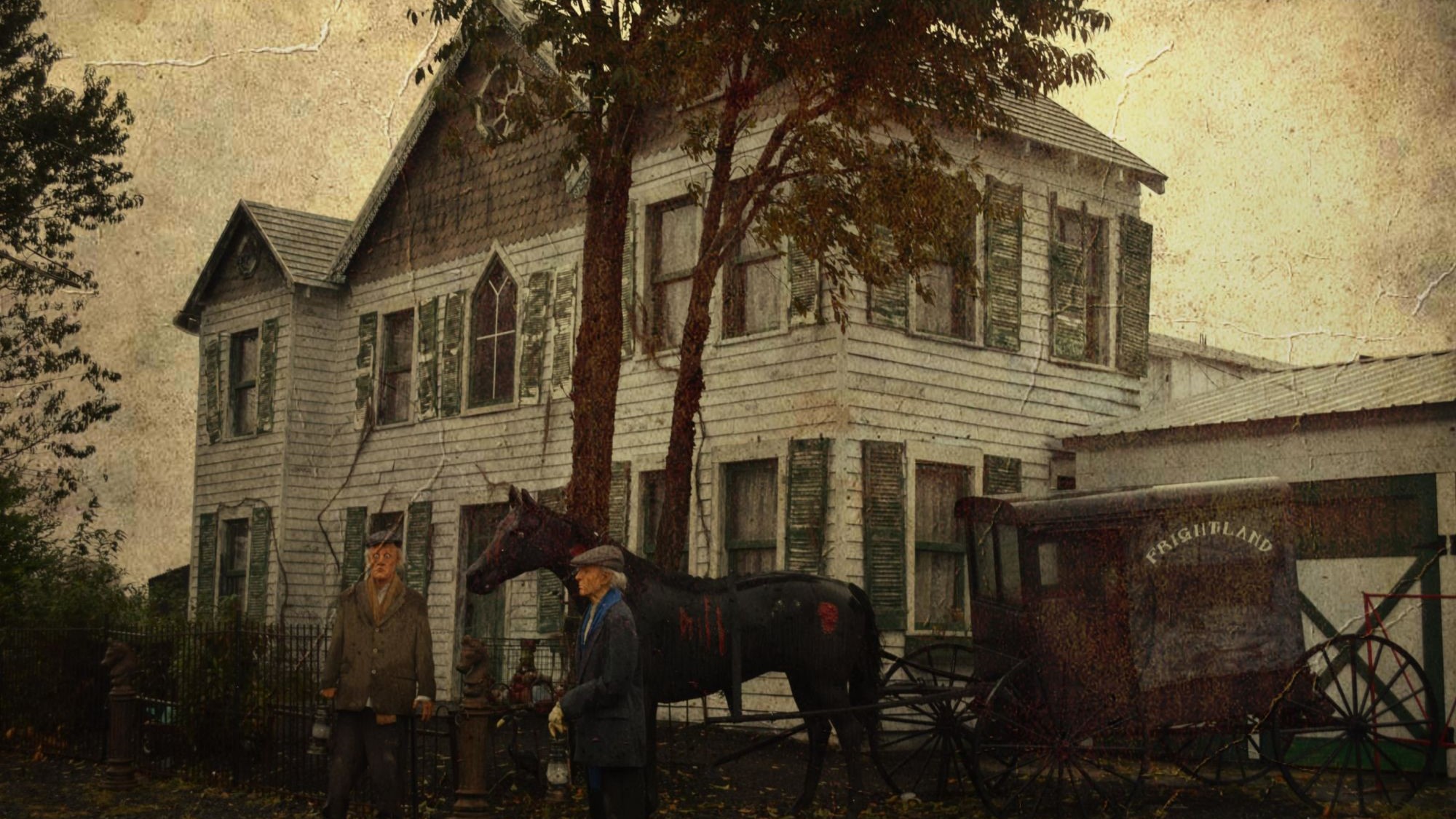Artists impression - not the actual house!
Walk up Europa Road from Gibraltar’s bustling Main Street and the noise fades behind the limestone bulk of the Rock. As you climb toward the south, along the winding rise past the former Shorthorn Farm and drop down South Barrack Road into an area once known as Black-Strap Hill, the air changes. The view opens across the bay, sunlight dances on the sea, and yet, even now, there’s an uneasy quiet in that corner of South District. Locals once whispered about a house there - a beautiful home abandoned, then locked tight. To some, it was just another military quarter gone to ruin; to others, it was Gibraltar’s most haunted residence.
This is the story of the haunted house on Scud Hill, one of Gibraltar’s oldest ghost tales - nearly forgotten today, but recorded in 19th-century writings as a place that “stood unoccupied, for to it were attached tales of jealousy and murder.”
A Hill with History

Scud Hill rises from Rosia Road. In the early 1800s, the slope was dotted with whitewashed houses and small military quarters, overlooking the Mediterranean. It was an enviable spot: breezy, sunlit, and within walking distance of the town’s heart. Soldiers, officers, and a few civilian families made their homes there.
Yet among those homes was one that locals began to avoid. It was said to be beautifully situated, high above Scud Hill (closer to today's Schomberg) with commanding views and well-built rooms. But by the late 1830s, it stood empty. Doors barred. Shutters closed. We know this thanks to an 1841 account preserved by local historians and reproduced in the blog The People of Gibraltar. The writer described it as “a house appropriated by government to the use of the military, but for several months it had stood unoccupied, for to it were attached tales of jealousy and murder-ghostly visitants were said to wander there, making night hideous with wailings for peace or vengeance.”
Those words, written nearly two centuries ago, form the core of Gibraltar’s most elusive haunting.
The Legend of Jealousy and Murder
So what really happened in that house on Scud Hill?
The stories differ. Some say a young officer once lived there with his wife, who was known for her beauty and friendliness. When the officer was called away for duty, a jealous colleague pursued her attention. The gossip of the small garrison community twisted affection into scandal, and when the officer returned unexpectedly, tragedy followed - a confrontation, a shot fired, and the woman’s cry that echoed across the hill.
Others claim it was a civilian family, not military at all, torn apart by jealousy between siblings over an inheritance. According to this version, the murder was never proven but “the blood on the floorboards could never be washed away.” After that, no one stayed long. Tenants who moved in spoke of footsteps on the stairs at night, doors slamming, and cold draughts that carried faint sobbing voices.
One by one, they left. “Two or three families,” the 1841 account notes, “tempted by the beauty of its position, had become its tenants; but all had been haunted out, and it had remained … closely locked up.”
Fact, Fiction, or Fear?
There’s something oddly convincing about this story, despite the gaps. The details fit Gibraltar’s character in the early 19th century: a small, gossipy colonial community; soldiers living side by side with civilians; the intense heat and claustrophobia of life under constant military watch. If jealousy and violence erupted anywhere, it would be in such a pressure cooker.
Still, no surviving military records or newspaper reports confirm a murder on Scud Hill. The tale may have grown from a real domestic quarrel or even from an accident, embroidered over time by retellings. What we can say is that the house was indeed known for its ominous reputation - enough that even official documents referred to it as “haunted.” That alone makes it part of Gibraltar’s cultural memory, and one of the few instances where a private residence, not a fortress or convent, carries such a story.
The House Itself
No one knows exactly which building it was. Old maps show several houses above Scud Hill, many now gone or absorbed into modern developments. The hill’s name changed too - Black-Strap Hill, sometimes “Strap Hill,” now simply Scud HIll. By the late 19th century, the site was largely redeveloped; newer buildings erased much of the old landscape.
But if you walk there today - roughly the area between Rodger's Road and Schomberg - you’ll still find clusters of stone houses with weathered facades. Some have been restored into modern flats, others stand quiet, their shutters faded. It’s not difficult to imagine which one might have earned its ghostly reputation.
Residents sometimes speak of “odd noises” at night in the area. A few years ago, a tenant on South Barrack Ramp told a local heritage blogger about “the feeling of someone watching” when she walked past a certain terrace after midnight. No one claims to have seen a figure, but the feeling lingers - a prickle between curiosity and fear.
Gibraltar’s Forgotten Ghost
Unlike the famous “Lady in Grey” said to haunt the Governor’s residence, the Scud Hill ghost has no name. She’s not a nun, not an official legend marketed to tourists. She’s a whisper from a time when ghost stories travelled by candlelight rather than brochure.
And perhaps that’s why this one feels more real. The haunted house on Scud Hill was a home, not a grand building. Its tragedy - jealousy, love, rage — could belong to any household. It reminds us that the past isn’t always polite architecture and history plaques. Sometimes it’s personal. Intimate. A scream behind closed shutters that still echoes in the stones.
Gibraltar's Patchwork Past
Ghost stories like this one endure because they help us process what time erases. Gibraltar has always been a place of arrivals and departures: soldiers stationed and sent away, families uprooted, lovers separated by duty. The haunted house on Scud Hill captures that transience - a home that could not hold its people, a beauty spoiled by violence, a structure left empty yet unable to rest.
Even skeptics find meaning in such tales. A haunting is a metaphor for memory: the way certain places refuse to forget. When a community repeats a story for two centuries, it’s not just fear speaking - it’s also a kind of remembrance. Somewhere in those stones is a trace of human drama that the official records overlooked.
Visiting Today
There’s no tour sign or plaque for the Scud Hill haunting. If you want to visit, head off Europa Road onto South Barrack Road to the south, following down the hill towards South Barrack Ramp. From the certain spots, you’ll see the sun on the sea - and maybe, if the wind catches the right corner, you’ll hear something else. A sigh, a whisper, a story retold by the breeze.
Stand there a moment. Imagine the locked house, its windows shuttered, the soldiers who refused to stay, the families who fled. Whether or not you believe in ghosts, you’ll feel the weight of history pressing close - the kind that’s less about apparitions than about emotion trapped in place.
The haunted house of Scud Hill may have vanished from Gibraltar’s skyline, but its legend lingers in the air. Like all the best ghost stories, it reminds us that even in bright sunlight, the past is never truly gone.
